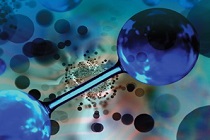 Krystian Wójcik from the Polish Geological Institute – National Research Institute (PGI-NRI) participated in the international H2NORWAY conference, as a part of the hydrogen mission organized by the Polish Investment and Trade Agency (PAIH) to Stavanger.
Krystian Wójcik from the Polish Geological Institute – National Research Institute (PGI-NRI) participated in the international H2NORWAY conference, as a part of the hydrogen mission organized by the Polish Investment and Trade Agency (PAIH) to Stavanger.
The three-day visit to Norway, held from September 10–12, 2025, brought together representatives from 15 Polish companies and institutions involved in the hydrogen sector. It was an excellent opportunity to establish business contacts with the Norwegian energy sector during the scientific conference, as well as to visit Gassco – official Norway transmission gas system operator, the Kaupanes Hydrogen plant in Egersund, and to pay a courtesy visit to the Honorary Consul of the Republic of Poland, Bjørn Olav Bredal.
The mission aimed to gain knowledge and foster cooperation in the exploration of natural (white) hydrogen, the transformation of conventional gas exploitation toward blue hydrogen, and the development of green hydrogen production technologies. Norway, as Europe’s leading exporter of natural gas, holds resources that—sooner or later—should be replaced by zero-emission energy sources in line with the EU-driven energy transition requirements.
The H2Norway conference, organized by the city of Stavanger, Nærings Foreningen, ONS, and Energy Transition Norway, gathered over 220 participants from Norway, Germany, the Netherlands, France, Denmark, Japan, Italy, the UK, and Poland. Selected speakers presented the potential of development of the clean hydrogen technologies and the challenges facing the sector in Norway over the coming years. This was the second international hydrogen conference held in Stavanger, but compared to the first meeting in 2023, optimism in the industry has slightly waned. Companies are now facing higher energy costs, tighter access to capital, and unclear regulatory frameworks from the EU, which remains the primary recipient of energy from the Norwegian Continental Shelf. As Lars Nitter Havro, Head of Energy Macro Research at Rystad Energy, stated: “Hydrogen is definitely not dead.” However, the hydrogen market needs subsidies, predictable regulations, stable offtake contracts, and cross-border cooperation. Ongoing debates over criteria and regulations are causing investors to delay decisions, slowing final investments. Europe risks losing its leadership in hydrogen production and project development to regions such as Australia, the Middle East, the US, and China.
It’s no surprise that Norway sees the maritime transport sector as the most promising market for introducing, testing, and establishing hydrogen technologies—at least initially, to get the market moving. The first liquid hydrogen-powered ferry is already sailing between the fjords. Ammonia- and hydrogen-fueled ships are expected by 2026. Large-scale hydrogen production will require infrastructure investments: pipelines, storage facilities, and ports. An open question remains: which type of clean hydrogen (meeting RFNBO criteria) should be prioritized? While Norway’s long-term goal is to produce and export green hydrogen, it seems reasonable to first utilize natural gas conversion technologies combined with carbon capture and storage to produce blue hydrogen. This is Norway’s main opportunity, given its vast hydrocarbon reserves. The parallels with Poland are clear. Unfortunately, despite Norway’s extensive experience in natural gas exploration, the problematics of white hydrogen remains underdeveloped.
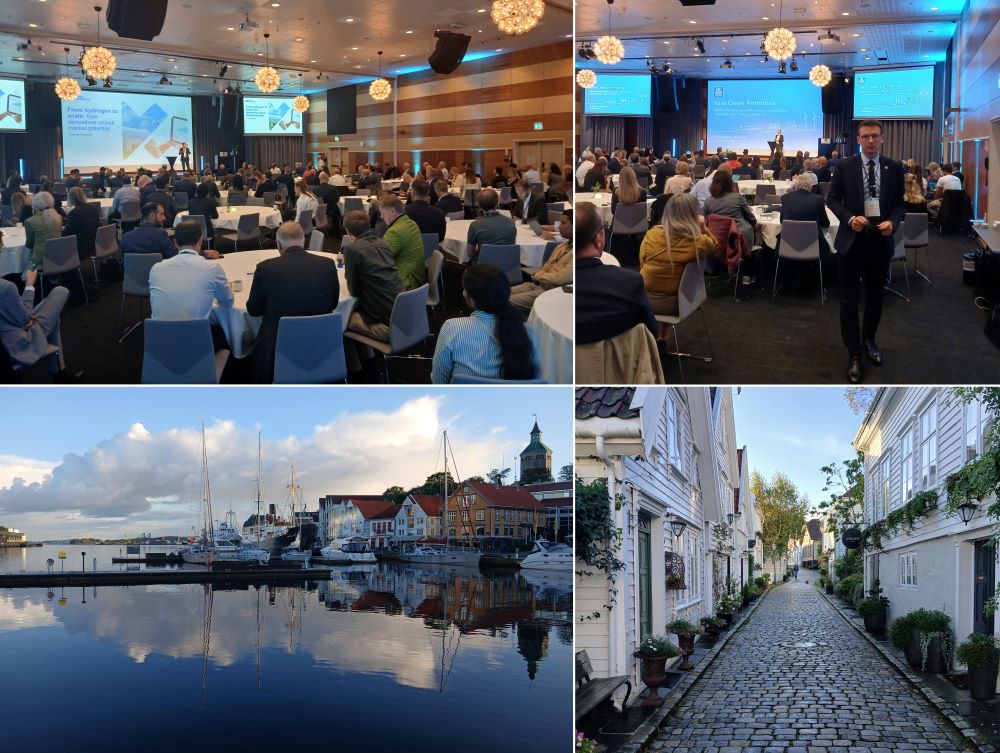
H2Norway –Second edition of the hydrogen conference held in Stavanger, Norway’s third-largest city, beautifully located at the mouth of Lysefjord. Among the conference participants was Dr. Krystian Wójcik from PGI-NRI
As part of the hydrogen mission, PAIH also organized a visit to Gassco – official operator of the Norway gas transmission system. Gassco manages approximately 8,600 km of pipelines in the North Sea and Norwegian Sea, transporting gas from 60 fields to 3 processing plants and then to 6 terminals in Germany, the Netherlands, France, and the UK. The EUROPIPE II pipeline, which connects Denmark to Poland via the BALTICPIPE, is also part of this system. In 2024, gas exports from the Norwegian Contnental Shelf totaled 1,295 TWh.
Gassco is also conducting R&D projects assessing the potential to transform its system for hydrogen and CO2 transport. The hydrogen pipeline project connecting Norway and Germany (H2T Project) was unfortunately abandoned in 2024 due to low market interest—no suppliers or buyers. Still, Gassco aims to maintain its leadership in energy transmission and hopes to “do the same with hydrogen what we do with natural gas.” Regarding CO₂, two pipeline projects—CO2architect and CO2T—are underway. Notably, CO2 storage would not take place in depleted gas fields but in isolated saline aquifers. As stated on Gassco’s official website, Norway’s energy resources—natural gas, hydropower, and wind—along with CO₂ storage potential and developed infrastructure, are key to decarbonizing Europe’s energy system.
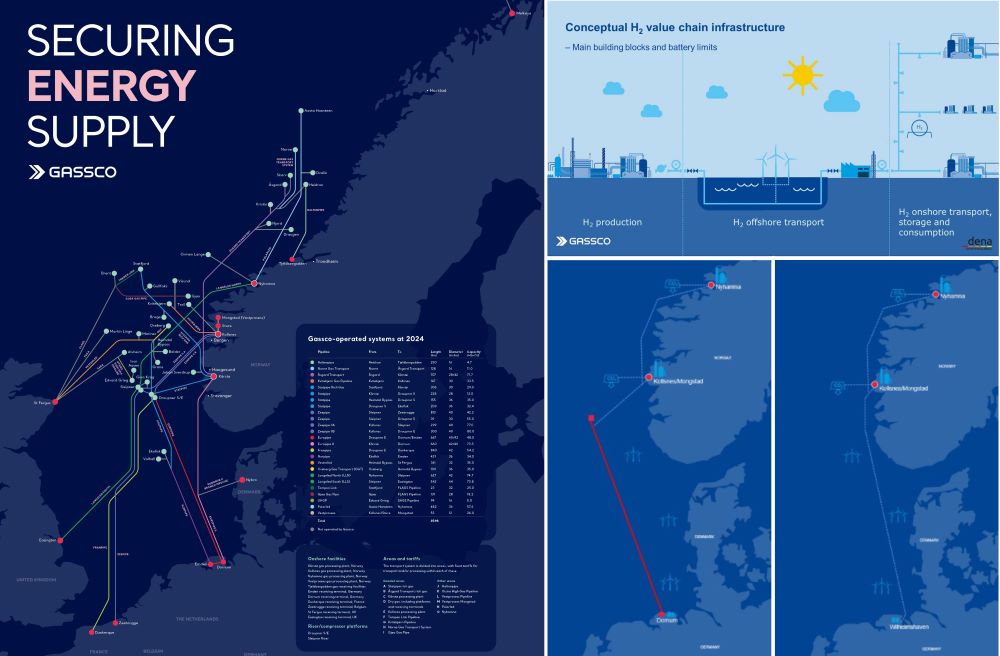
Natural gas transmission system from the Norwegian Continental Shelf managed by Gassco – the state operator in Norway. Among the recently abandoned plans of the development of hydrogen infrastructure were two concepts for the construction of a hydrogen pipeline from Norway to Germany, considering the modernization of the EUROPIPE or the construction of a new connection (source: https://gassco.eu/en/home)
The second study visit took place at the Kaupanes Hydrogen plant in Egersund, which began operations in February 2024. It produces green hydrogen via water electrolysis powered by renewable energy. Technically, the electricity comes from the grid, but since Norway’s grid is predominantly supplied by hydropower, the hydrogen produced is considered green. The plant operates at 1 MW, allowing for a maximum daily output of just under 400 kg of hydrogen. Producing 1 kg of H2 requires about 60 kWh, which, at Norwegian electricity prices, corresponds to roughly €5–6 per kilogram. This price does not include compression costs to 350 bar pressure dedicated to refueling stations. The water used for electrolysis comes directly from the municipal supply—clean enough to avoid demineralization and nearly free in Norway. Oxygen, a by-product of electrolysis, is currently released into the atmosphere, although some plans exist to use it for enhancing natural gas combustion in nearby industrial plants or oxygenating shrimp farms in local fjords. An expansion project of Kaupanes Hydrogen plant is underway to increase production to 8 tonnes of hydrogen per day by 2027.
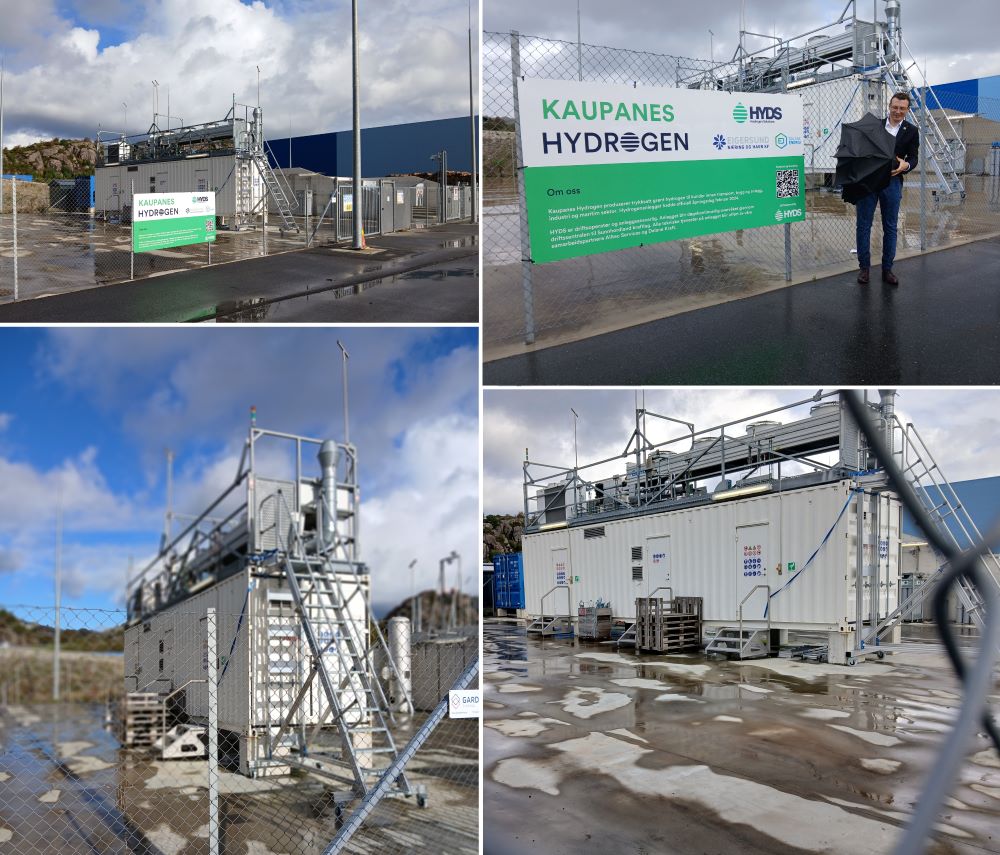
The Kaupanes Hydrogen production plant in Egersund –the container contains two electrolysers connected to the power grid (connection capacity of 1 MW) and the municipal water supply. The facility is capable of producing about 400 kg of hydrogen per day
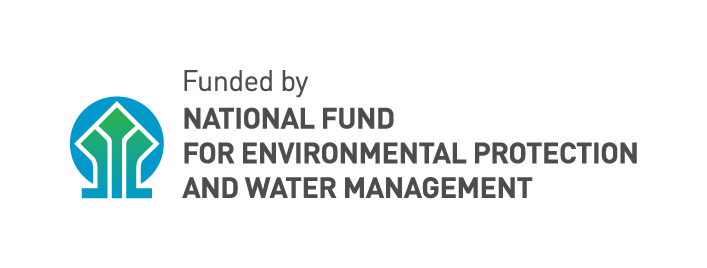
Participation in the international H2NORWAY conference and the hydrogen mission organized by the Polish Investment and Trade Agency to Stavanger was funded by the National Fund for Environmental Protection and Water Management under Agreement No. 637/2024 titled “Potential for Exploration and Development of Natural Hydrogen Fields in Poland – Phase I” (76/2025/Wn07/FG-go-dn/D 26th February, 2025)
Text and photos: Krystian Wójcik















 PGI-NRI offer
PGI-NRI offer Mineral resources of Poland
Mineral resources of Poland  Oil and Gas in Poland
Oil and Gas in Poland 




 Subscribe to RSS Feed
Subscribe to RSS Feed